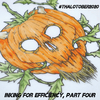Making Art Work: Pricing Points
“Welcome to the Making Art Work Series! Through this accumulating and growing collection of resource articles, we hope to give insight and suggestions to artists in their journey to becoming their most successful creative selves!”
As an artist, entrepreneur and instructor there are fewer important questions than: "What you I charge for my services?". It can be a very personal decision that depends on many outside factors. Striking that perfect balance between public appeal and personal value is no easy task. However, we hope that if you are a creative in the teaching world looking to industrializing your brand, this small primer may be helpful to you!
There are a number of examples of class types that all come with a level of value associated with them, which we will list and refer to. Keep in mind, an important factor of pricing is noting outside factors such as student materials, travel, space and more. Because of these things, the price suggestions noted below are intended to be loosely adopted with plenty of room for change as you see fit.
- (Free to low cost involvement) – This price point (around Free to a cover priceof $5-$10) being the lowest, would yield the largest amount of public interest. The kind of experience provided with this price point can vary, but something less time-consuming or labor-intensive projects would be ideal. This kind of format is an appealing “Open House” or “General Invite” style that can get people in to get a taste of what you have to offer without the risk of a costly investment up front. This price would also reflect the kind of materials, activity and time you are spending on your product. Often times, this works for an open studio or “introductory” class framework.
- (Low cost to a base rate)– A “base rate” is considered to be around 10-25 dollars, but can be higher or lower. This price point can qualify for a casual class that lasts between one to two hours, or as you would see fit. This price point is appealing for students looking to learn, and if you can provide a lesson plan that can be finished in a single class, that can be a great selling point!
- (Mid cost) – Mid cost can be used to $25-40 dollars. This can be an acceptable target price for Workshop or Event-themed programming, especially if they are lasting between three to four hours or more. This kind of price point is often associated with additional incentives such as one-on-one sessions, critique sessions or other possible additions to the experience. Collegiate-level classes that involve traditional skill development and observational drawing with group critique also fall into this kind of cost and experience.
- (Premium Cost)- This cost, roughly at $40 or more, is a possibility depending on the kind of class you are offering. If this is a high-end, high value event or workshop that deals with either lectures or learning specific art techniques, you could consider this as an option. Event-based programming such as an education and entertainment/social element would be a great way to add more value to a cost of this type.
If you need ideas for the kinds of classes that can be offered that match with this sort of cost breakdown, you can read up on our related article here. A major component is being comfortable with the amount of money you are charging and being confident in your ability to deliver on the quality being presented. It takes some fine-tuning, but believing and valuing yourself, your brand and your craft will help you in getting the most out of your course offerings.
Keep in mind, this list is merely intended to offer suggestions and inspire artists to create what best works with them. If you have something that works for you, let us know in the comments! We hope this is helpful, and enjoy getting your work out there and getting paid!







